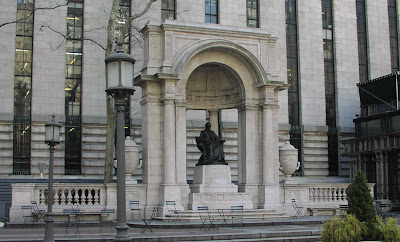
Why do we have a statue in Central Park of a medieval king of Poland? And why would Hitler surely have destroyed this sculpture, had it been returned to Poland after the New York World’s Fair of 1939? That’s the focus of “About the Sculpture.” “About the Subject” focuses on the battle between Jagiello’s army and the Teutonic Knights at Grunwald (1410).
Several sources called this Jagiello a copy of the Cracow statue of Jagiello that was sponsored by world-renowned pianist Ignacy Paderewski and was destroyed on Hitler’s orders. Although I didn't have space to discuss this in Outdoor Monuments of Manhattan, research showed that Central Park's Jagiello is not a copy of Paderewski's, as you can see by comparing a model of the Cracow sculpture (scroll down in the left-hand frame) with the photo above.
Several sources called this Jagiello a copy of the Cracow statue of Jagiello that was sponsored by world-renowned pianist Ignacy Paderewski and was destroyed on Hitler’s orders. Although I didn't have space to discuss this in Outdoor Monuments of Manhattan, research showed that Central Park's Jagiello is not a copy of Paderewski's, as you can see by comparing a model of the Cracow sculpture (scroll down in the left-hand frame) with the photo above.































